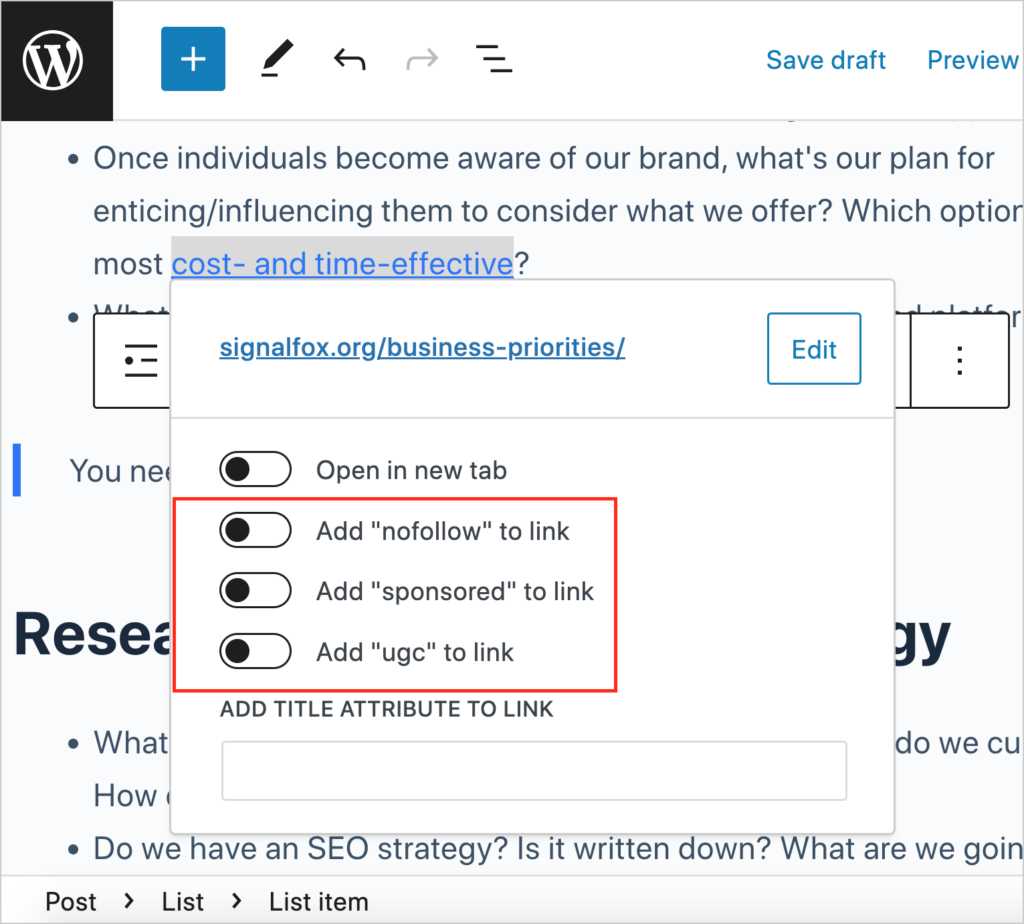A nofollow link contains an HTML attribute (rel=”nofollow”) that instructs search engines not to pass link equity or link juice to the target webpage.
Common uses of nofollow links include:
H
- To discourage spam: Nofollow links help prevent comment spam and user-generated spam on websites by making such links worthless for SEO purposes.
- To avoid endorsement: Websites can use nofollow links to avoid endorsing or passing authority to linked content they don't trust or vouch for.
- Paid links and advertisements: Search engines require nofollow or sponsored attributes on paid links in order to prevent manipulation of search rankings.
- User-generated content: Nofollow links are often used on user-generated content, such as blog comments or forum posts, to prevent potential spam or low-quality links from affecting the website's search rankings.
Adding the Nofollow Attribute in WordPress
WordPress site owners can use the All in One SEO (AIOSEO) plugin to add nofollow, sponsored, or UGC (user-generated content) attributes to links.
There's no need to deal with code; users simply toggle an attribute on or off.
T

Related:
An SEO Guide to Nofollow, Sponsored, and UGC Links
Sponsored Links: What are They and Do They Impact SEO?
What Are Paid Links in SEO and Do They Work?
Nofollow vs. Dofollow Links: Everything You Need to Know
M